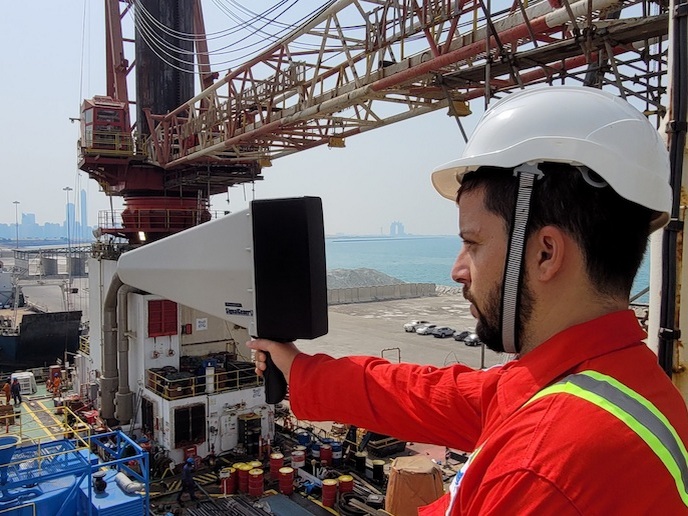Wearable technology boosts offshore industry safety
Oil and gas offshore platforms rank among the most hazardous working environments in the world, with one of the highest severe-injury rates. Fires and explosions, gas leaks and drownings are among the main risks. “Accidents on offshore oil rigs occur without warning and can evolve in a flash,” says OffshoreMuster(opens in new window) project coordinator Tasos Kounoudes, CEO of SignalGeneriX(opens in new window) in Cyprus. “Up to now, incidents have mainly been handled via non-automated procedures, with minimum technological aid.” A recent Joint Research Centre(opens in new window) analysis on past accidents also found extensive shortcomings in evacuation procedures in every case with numerous casualties. These shortcomings were often exacerbated by a lack of a comprehensive awareness of the situation and communication.
Effective personnel tracking
The EU-funded OffshoreMuster project was launched to address these shortcomings, through the development of a next-generation mustering and evacuation coordination system. In addition to SignalGeneriX, the project consortium consisted of Hyperion System Engineering(opens in new window) from Cyprus, CSEM(opens in new window) from Switzerland and OptionsNet(opens in new window) from Greece. The system developed incorporates real-time personnel location and status awareness, evacuation management, instant Person on Board identification, electronic mustering, and overboard people search. At the core of this system are wearable devices with position tracking and situation awareness capabilities.
Surmounting the challenge of wireless distortion
A key challenge here is that offshore platforms are vast metallic structures, which can distort wireless communication due to reflections and signal multipath effects. Fires can also lead to links with onshore command structures being severed. Optimal transmission frequencies and protocols were identified to mitigate these issues and to minimise data volumes utilising the available bandwidth. Software algorithms and models for situational awareness monitoring and person-overboard detection were also refined. Localisation devices were developed to detect signals from the wearable devices. These were resiliently interconnected and covered the offshore facility. The system gives management instant views of personnel, medical and rescue team locations, movements and person-overboard alerts, as well as instant alerts when personnel enter hazardous or restricted areas. “Rapid mustering and evacuation can not only save lives but also speed up firefighting operations,” notes Kounoudes. “Supervisors need to maintain a clear, real-time view of situations, to direct platform crews effectively and efficiently.” This technology was then successfully validated in pilots carried out on an offshore oil and gas facility.
Ensuring offshore safety
Kounoudes is confident that the successfully validated OffshoreMuster system will help to transform health and safety standards in the offshore oil and gas industry, and ultimately save lives. It could also allow oil rig owners and operators to drastically reduce accident-related and insurance costs. Indeed, the project team were careful to ensure that the wearables could be mass-produced, to meet target manufacturing costs and enable straightforward use by non-tech-savvy users. “Our focus is very much a niche market – evacuation management for offshore oil and gas environments,” adds Kounoudes. “Similar commercial products tend to target applications such as manufacturing, where signal reflections are minimal, and associated technical challenges can easily be overcome.” The goal now is to introduce this innovation into the market through a spin-out company. “We are currently targeting the offshore upstream oil and gas sector – there are around 1 500 oil and gas platforms worldwide,” remarks Kounoudes. “But the technology can also be adapted for other end users, such as offshore support vessels and submersibles, as well as onshore power generation industries.”



